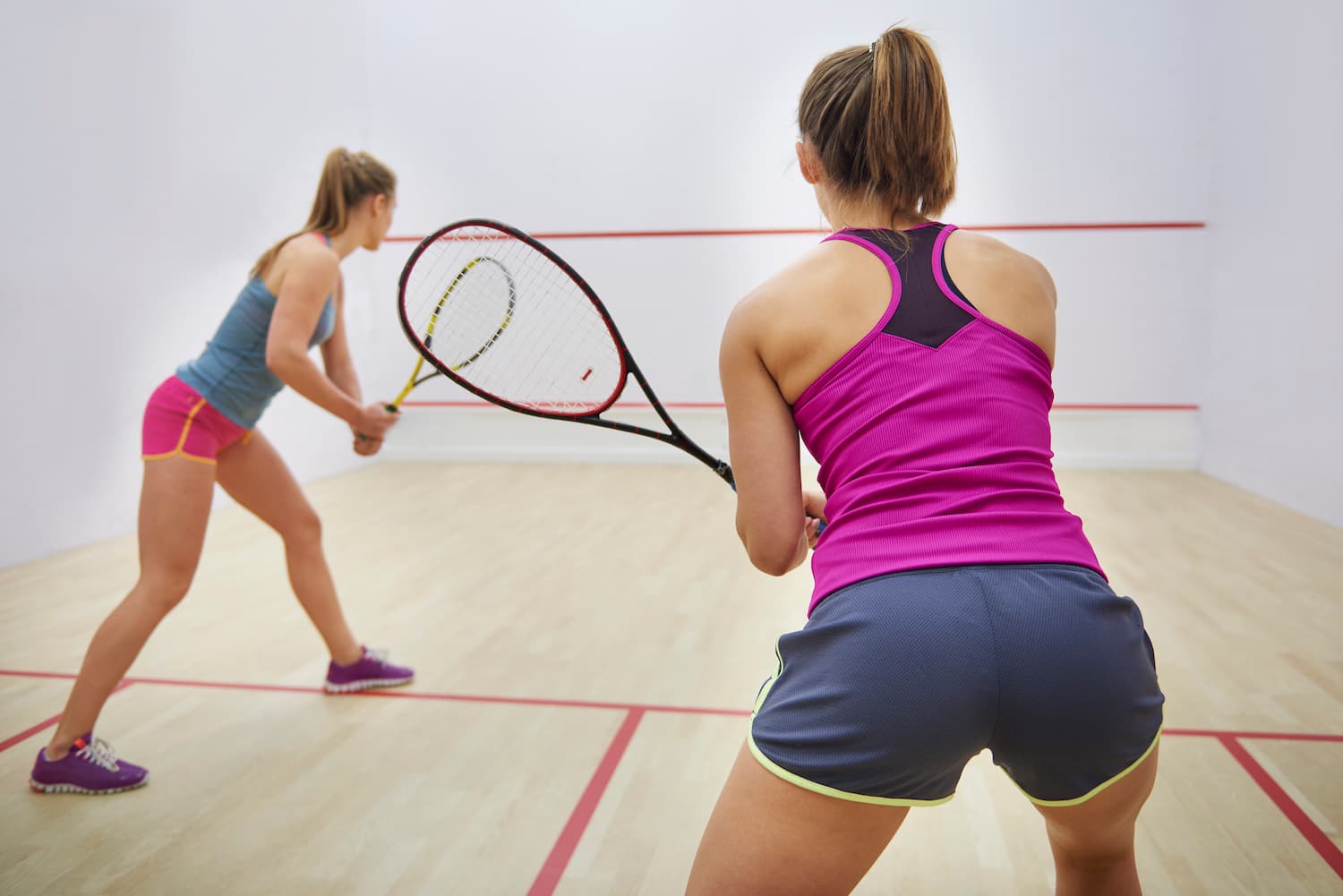Squash is a fast, high-impact game that requires players to have speed, agility, and endurance. The game is a great way to stay fit; however, it also comes with certain risks.
What is Squash?
Squash is an indoor game played with a racquet and ball on a four-walled court. The game is played by two or four players who alternate hitting the ball with their rackets. The players can use the walls or floor when hitting the ball with their racquets. The objective of squash is to hit the ball in a way that keeps your opponent from being able to offer a return (hit the ball).
The game is popular as a way to stay fit and to improve skills. However, like other sports, squash comes with the risk of injuries.
Most Common Injuries in Squash
Squash is a demanding game that can cause a wide variety of injuries, including the following:
- Muscle pulls
- Lower limb injuries (are the most common in this sport)
- Strains & sprains
- Overuse injuries
- Impact injuries
- Injuries from slips/falls
- Elbow/shoulder/wrist injuries
- Back injuries
- Head/eye injuries
- Heat stress
What are the Risk Factors for Squash Injuries?
Some risk factors for injuries caused by the game of squash include:
- Age: those over 40 are at an increased risk of injury; older players may not be in good condition before they start playing
- Poor fitness level: this game requires a high level of fitness; poor fitness levels can result in injuries
- Poor technique: puts strain on joints and muscles; for instance, holding the racquet incorrectly can cause stress to the wrist
- Lack of protective equipment: failing to wear the right protective equipment can result in eye injuries
- Past injuries: squash can cause problems in those who have older injuries (especially of the ankles)
- Time playing the game: those who compete or play too often are at a higher risk of developing overuse injuries
Treatment for Squash Injuries
Here are some common treatments for different types of squash injuries.
Stop playing: if an injury occurs, stop playing right then to avoid causing further damage and playing while in pain could aggravate the injury or make it worse.
See the doctor: early treatment and management of the injury mean less time away from this exciting game.
Treat all soft tissue injuries: including sprains, muscle strains, bumps, and bruises. For severe pain, see a doctor as soon as possible.
Don’t play: avoid playing squash until you’ve fully recovered from the injury.
Past joint injuries: if you have a history of joint injuries, it’s best to see your doctor before playing squash.
Find the cause & take lessons: it’s essential to find the cause of your injury to avoid this problem in the future. Finding a professional squash trainer can improve your technique and help you avoid injuries.
How to Prevent Squash Injuries
Here are some ways you can prevent squash injuries:
Warm-up & cool down: these are essential to any sport and especially so for squash. Squash is a fast game involving turns, twists, stretches, and more as you play. The game is gruelling and demanding on your body. Starting squash before your heart and muscles are warmed up can cause health issues. So, always warm up to allow your body to be ready to play. Cooling down when you’ve finished the game is just as important. It’s also a good idea to rest for at least a day between squash sessions.
Mix up types of training: using other types of exercise can prevent repetitive injuries and develop a wider range of movement. They also help improve your strength and stamina. Cross-training also is excellent for avoiding overuse injuries and using other sets of muscles.
Don’t play while injured: avoid playing while injured, as this could cause further injuries. Going back too soon is also a cause for additional injuries. For instance, if your knee is sore, it’s a good idea to take a couple of days. Instead, use light weights and stretches to stay in shape as your injury heals. However, check with your doctor or physical therapist to see if they recommend using weights and stretches as the injury heals. They may have other recommendations, depending on the type of injury you have.
Use the proper equipment: invest in the right equipment before you head onto the court. Some squash courts have rules that players need to have the right protective gear before playing. That includes the right protective eyewear, squash shoes, and more.
Stretching: is also necessary to prevent injuries. Your muscles are put through intense physical activity, which can lead to tightness, soreness, and other problems. However, stretching helps to improve flexibility, increase range of motion, and reduce muscle tension. Be sure to stretch after playing squash to ensure you cool down and prevent sore muscles.
Hydration: staying hydrated is essential for any sport, including squash. This high-intensity sport makes you sweat, causing your body to lose fluids. Dehydration can make you feel tired, experience muscle cramps, and decrease your playing ability. All of this can also cause injuries. Sports drinks and water are optimal choices for staying hydrated.
Sports Massage
You may also want to consider sports massage if you play squash regularly. Sports massage offers many benefits and can ensure you’re at the top of your game. This form of massage also works to prevent injuries by keeping your muscles flexible and supple.
Early assessment, treatment, and intervention can help you get back to the game faster if you’re injured. And remember, if you are injured, stop playing immediately and apply ice to reduce pain and swelling. It’s also a good idea to seek medical attention, which may include sports massage.
Concluding Thoughts
Squash is a popular game requiring players to be fit to play competitively. Before playing this intense game, it’s a good idea to warm up and prepare your body for the game. A warm-up prepares your muscles and tendons for the game and can prevent injuries. When playing squash, make sure to wear the proper protective equipment. Once you’re finished playing, you must cool down and stretch to relax your muscles.
If you’re injured during the game, stop immediately and apply ice to your injury. It’s also recommended to seek medical attention and follow your healthcare provider’s recommendations for healing. Give your body time to heal so you can return to squash sooner!







